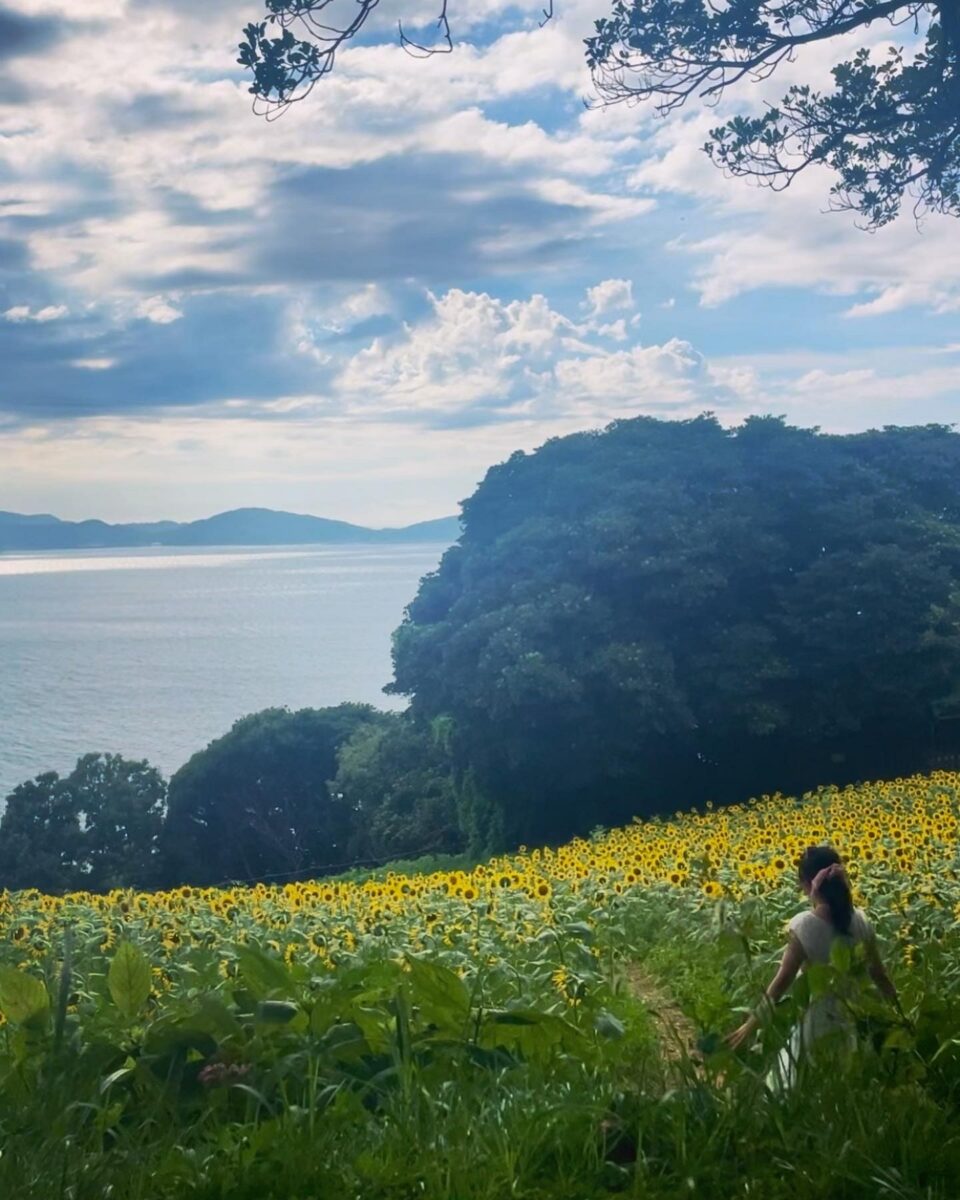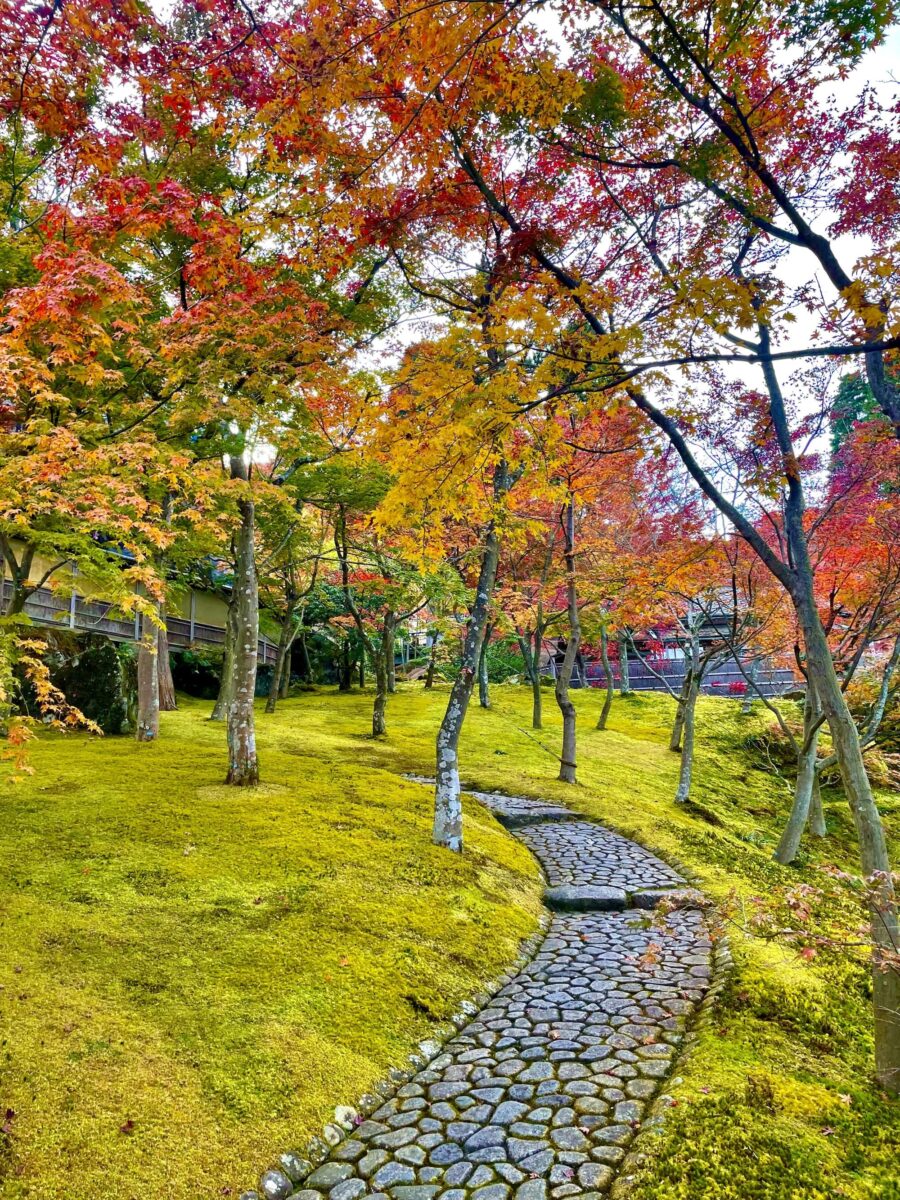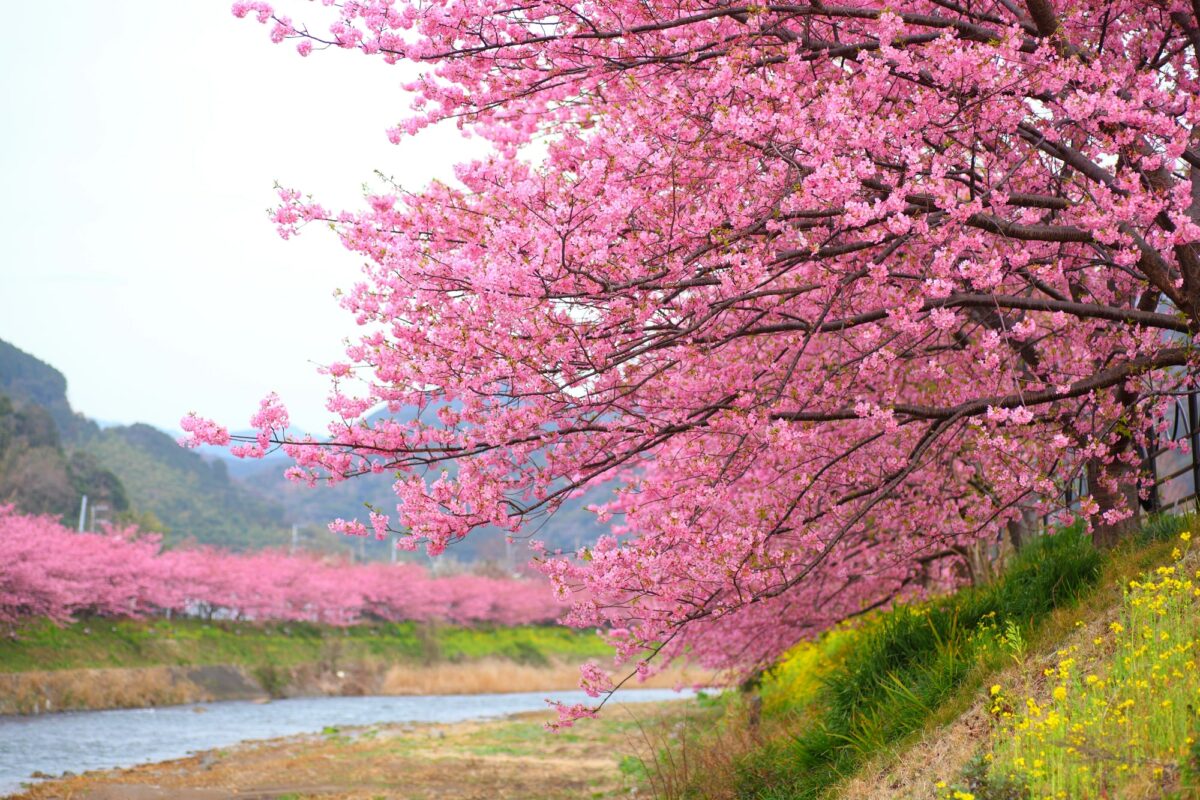Cherry blossoms aren’t the only gorgeous flowers of Japan– even if they are the golden child that everyone raves about online.
Some links on this page are affiliate links. We may earn a commission if you make a purchase, at no additional cost to you.

As a country with distinct seasons, Japan has a culture that cherishes all 4 seasons and the sense of their passing– so there’s always something beautiful to see, no matter when you visit.
Follow along for 3 exquisite but underrated flowers for each season you might be visiting, and get the inside scoop on some photo spots for these beauties.
Spring
Cherry blossoms

- Viewing Season: mid March – early April
- Famous Spots: Ueno Park, Tokyo; Kiyomizu Temple, Kyoto
The common pale pink and white someiyoshino species bloom for 2 weeks between March and April on Japan’s main island, depending on the weather conditions of that year. Don’t worry if you miss it– you can find later blooming sakura when you move north, and the blossoms in Hokkaido have been known to reach full bloom as late as the first week of May.
You May Also Like
Nemophilia

- Viewing Season: mid April – early May
- Famous Spots: Uminonakamichi Seaside Park, Fukuoka Pref., Hitachi Seaside Park, Ibaraki Pref.
Also known as baby blue eyes, you can find a swaying field of these delicate blue blossoms at Uminonakamichi Seaside Park in Fukuoka pref., in the southwest part of Japan. Though similar in color, they are not the same as forget-me-nots.
Wisteria


- Viewing Season: early – mid May
- Famous Spots: Ashigaya Flower Park, Tochigi Pref.; Mandarji Park, Aichi Pref.; Jonangu Temple, Kyoto Pref.; Kawauchi Park, Fukuoka Pref.
Made even more well-known by the popular Demon Slayer anime/manga series, these ethereal blooms are intertwined with Japanese history and culture. They come in lavender, white, or pink and bloom at slightly different intervals. These hanging vines form a tunnel and are often enjoyed at night lit up.
The queen of all fuji no hana, or wisteria trees, is the 160-year-old “Great Wisteria” at Ashigaya Flower Park. There are over 350 wisteria trees in the park, and at their annual festival, they even have wisteria flavored ice cream in a beautiful lavender shade.
If you had to choose one spot to visit, definitely make the trek to Ashigaya Flower Park–which also happens to be the biggest flower park in Japan.
Summer
ROSES

- Viewing Season: May – early June
- Famous Spots: Kyu Furukawa Gardens, Tokyo Pref.; Tokugawaen, Aichi Pref.; Huis Ten Bosch Park, Nagasaki Pref.
Both Furukawa Gardens in Kita-ku of Tokyo and Tokugawaen in Aichi have rich histories along with their rose gardens; Tokyo is enhanced with a grand Western architectural style manor, and the other a Japanese garden style built by the Tokugawa clan.
Haus Ten Bosch has an incredible rose garden maze with what seems like a million colors and varieties.
Hydrangeas

- Viewing Season: June – early July
- Famous Spots: Hanabiyori Flower Park, Tokyo Pref.; Hondoji Temple, Chiba Pref.; Hasedera Temple, Kanawaga Pref.; Nabana no Sato Flower Park, Mie Pref.; Mimurotoji Temple, Kyoto.
At Hondoji and Hasedera Temple, these blossoms cover the hills in pastel pinks and purples like something out of a watercolor painting. Their viewing season is during or right after the rainy season in Japan (June & July).
Check out a comprehensive guide to Hanabiyori Flower Park.
Sunflowers


- Viewing Season: late July – August
- Famous Spots: Tokorozawa Himawari Fields, Saitama Pref.; Nokono Island Park, Fukuoka Pref.
These sunny blooms are the picture of vitality in midsummer, and you can find many sunflower fields to take the perfect summer selfie with all over Japan.
Visit Nokono Island Park for a view of the sunflower field against a crystalline ocean backdrop.
Fall
Cosmos

- Viewing Season: September
- Famous Spots: Hitachi Seaside Park, Ibaraki Pref.
A vivid pink, cosmos flowers are also named “autumn sakura” as they blanket the field in their vibrant colors.
Spider lilies

- Viewing Season: mid – late September
- Famous Spots: Mount Hachimaki, Nagasaki Pref.
A must-see in the fall, these blood-red lilies are deeply entwined with Japanese lore and are said to be unlucky–but oh, are they magnificent.
These poisonous plants are often planted around graves, hence their Japanese name, “higanbana,” which means flowers of the far shore or afterlife.
Momiji: Japanese Maple Trees


- Viewing Season: November
- Famous Spots: Hakone Museum of Art, Kanagawa Pref., Kenrokuen, Ishikawa Pref.
In autumn, Japan’s changing leaves turn bright red and are a sight to behold. Nearby, themed sweets such as momiji manju and crackers are often sold.
Winter
Tsubaki (Japanese camelia)

- Viewing Season: October – April, depending on the variety
- Famous Spots: Izu Oshima Island, Tokyo
These large blossoms are said to be lucky and have gods dwelling within them, so they are often planted near shrines or temples.
Plum blossoms

- Viewing Season: January – February
- Famous Spots: Atami Plum Festival, Shizuoka Pref.; Kitano Mantengu, Kyoto Pref.
Seen as the herald of spring, the plum blossoms signal warmer days ahead. Deep pink or white, these blooms aren’t as teeming or emphatic as cherry blossoms, but are beautiful nonetheless– especially the weeping variety.
Kawazu Sakura

- Viewing Season: February – early March
- Famous Spots: Kawazu, Shizuoka Pref.
Bummed because you’re missing the official cherry blossom season in March and April? Not to worry–you can find a different species of sakura in February and early March!
These shockingly pink flowers are a breed called “Kawazu Sakura,” discovered recently, and mainly found in Kawazu, Shizuoka. They line the river beautifully during the Kawazu Sakura Festival.
Conclusion
You can find many viewing spots for these flowers all over Japan, even if it’s not the spots I’ve listed here.
Personally, the flowers I find most visually impactful are hydrangeas, sunflowers, and wisteria–since they cover the landscape in large fields or clusters.
If you are a fellow nature lover, definitely check out one of the big flower parks–Ashigaya Flower Park, Nabano no Sato, Hana Biyori, Hitachi Seaside Park, Uminonakamichi Seaside Park– on your trip!



Leave a Reply